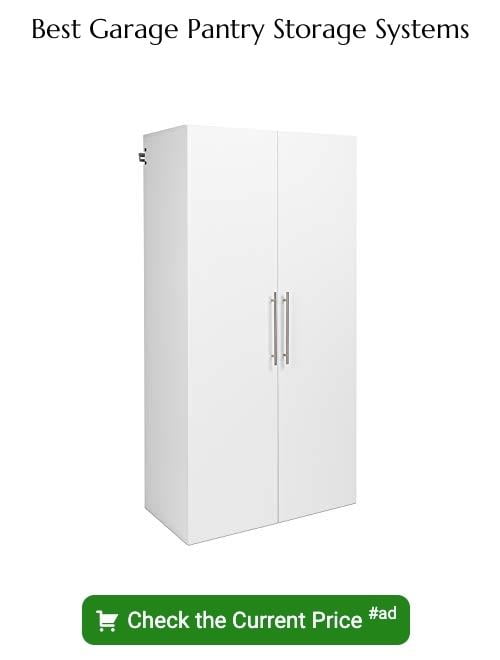Last updated on
Making use of your garage as a pantry is a smart move because it provides plenty of space for food stockpiling, ensuring you always have the necessary ingredients at hand.
Key takeaways:
- Optimized Kitchen Space: Relocate excess food and supplies to free up your kitchen.
- Bulk Purchase Efficiency: Store bulk items purchased at wholesale clubs.
- Protection from Temperature Fluctuations: Extend shelf life by storing items in a cooler garage environment.
- Disaster Preparedness: Ensure a sufficient supply of non-perishable foods and necessities.
- Accessibility and Convenience: Easy access for individuals with mobility issues or families.
Benefits of Garage Pantries
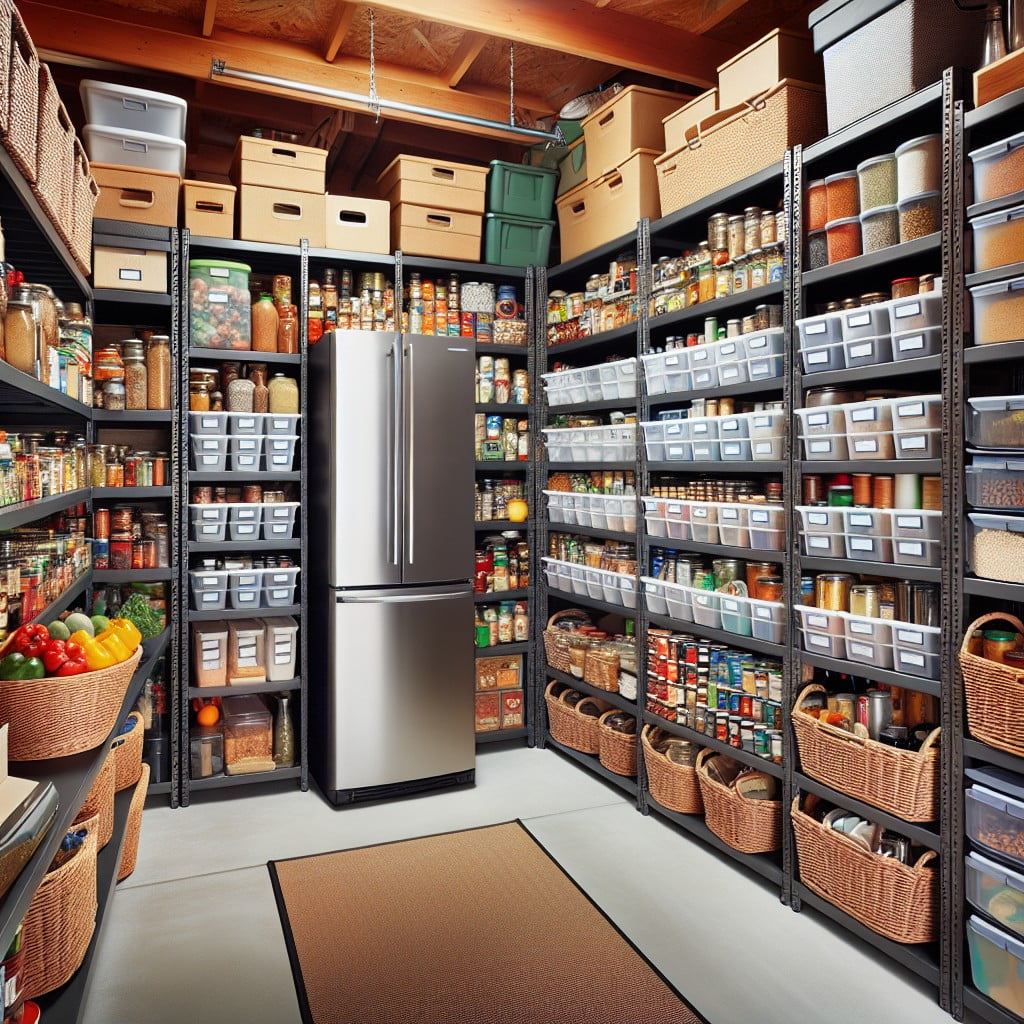
Transforming part of your garage into a pantry can yield numerous advantages for household organization and food storage. Here are some points that highlight these benefits:
- Optimized Kitchen Space: By relocating excess food and supplies, you liberate precious kitchen space, allowing for a more organized and functional cooking environment.
- Bulk Purchase Efficiency: A garage pantry permits the storage of bulk items purchased at wholesale clubs. This not only saves money but also reduces the frequency of shopping trips.
- Protection from Temperature Fluctuations: Storing certain items in a cooler garage environment, away from the heat of the kitchen, can extend their shelf life.
- Disaster Preparedness: A well-stocked garage pantry ensures that you have a sufficient supply of non-perishable foods and necessities on hand in case of emergencies.
- Accessibility and Convenience: For individuals with mobility issues or families with kids, having an additional pantry space that’s easy to access can make daily routines smoother.
Remember to consider the specific needs of your household and the types of items you plan to store when designing your garage pantry for maximum benefit.
Tidier and More Spacious Garage
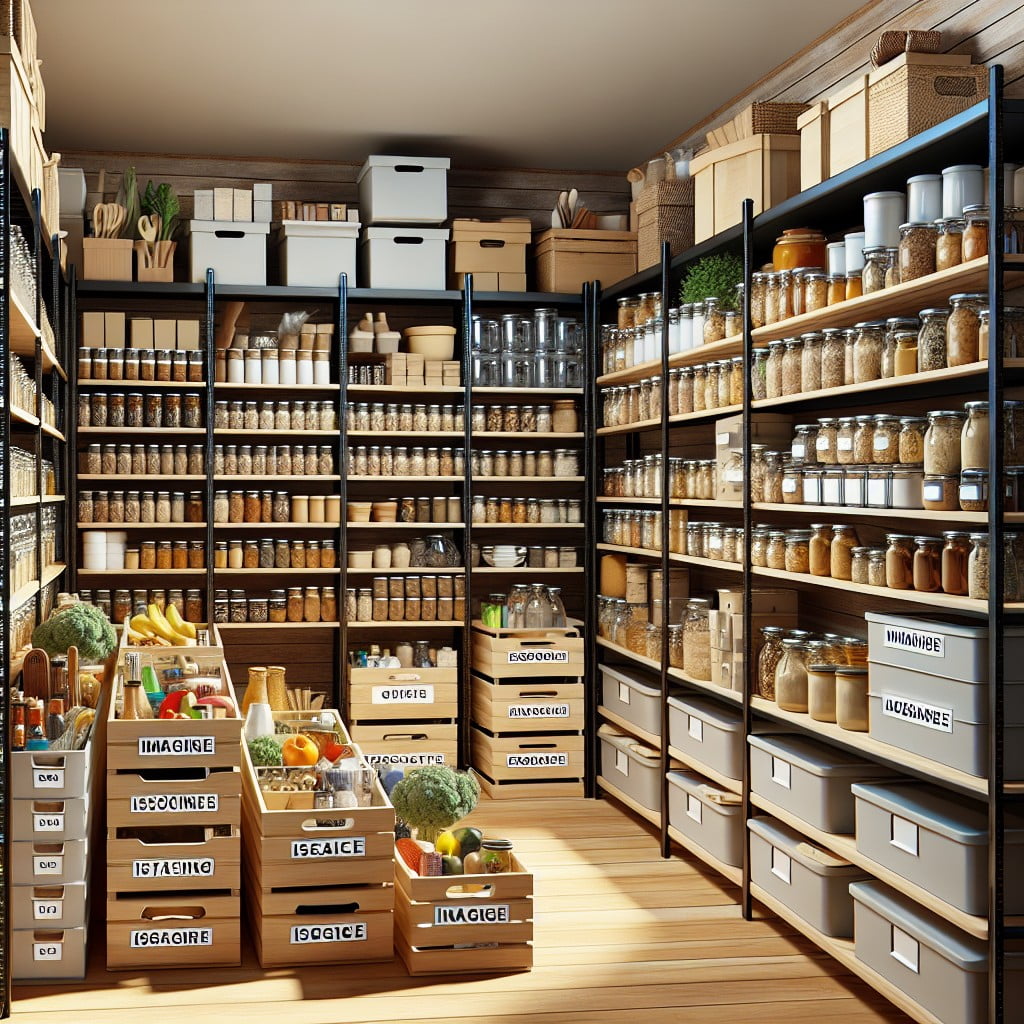
Creating a designated pantry area in your garage can dramatically improve its overall tidiness. By allocating a specific spot for food storage, you reduce the likelihood of random items being scattered throughout the space. This methodical approach helps in not only keeping grocery overflow out of the kitchen but also in preventing clutter from taking over valuable garage real estate.
One key to a spacious garage is utilizing vertical space. Wall-mounted shelves or a tall, slim pantry cabinet can store your goods without consuming too much floor area. This setup leaves ample room for parking cars, working on projects, or storing tools and sports equipment.
Another suggestion is to use clear storage containers. These allow you to see the contents at a glance, contributing to a neater appearance and more efficient use of space. Plus, with everything in its place, you save time when you need to find an item quickly.
Finally, adopting a minimalist approach by keeping only what you need ensures that your garage pantry becomes a practical extension of your kitchen storage, rather than an overflow area for seldom-used items. This means regularly decluttering and donating unneeded non-perishable food items to keep your space clean and manageable.
Easier to Locate Things
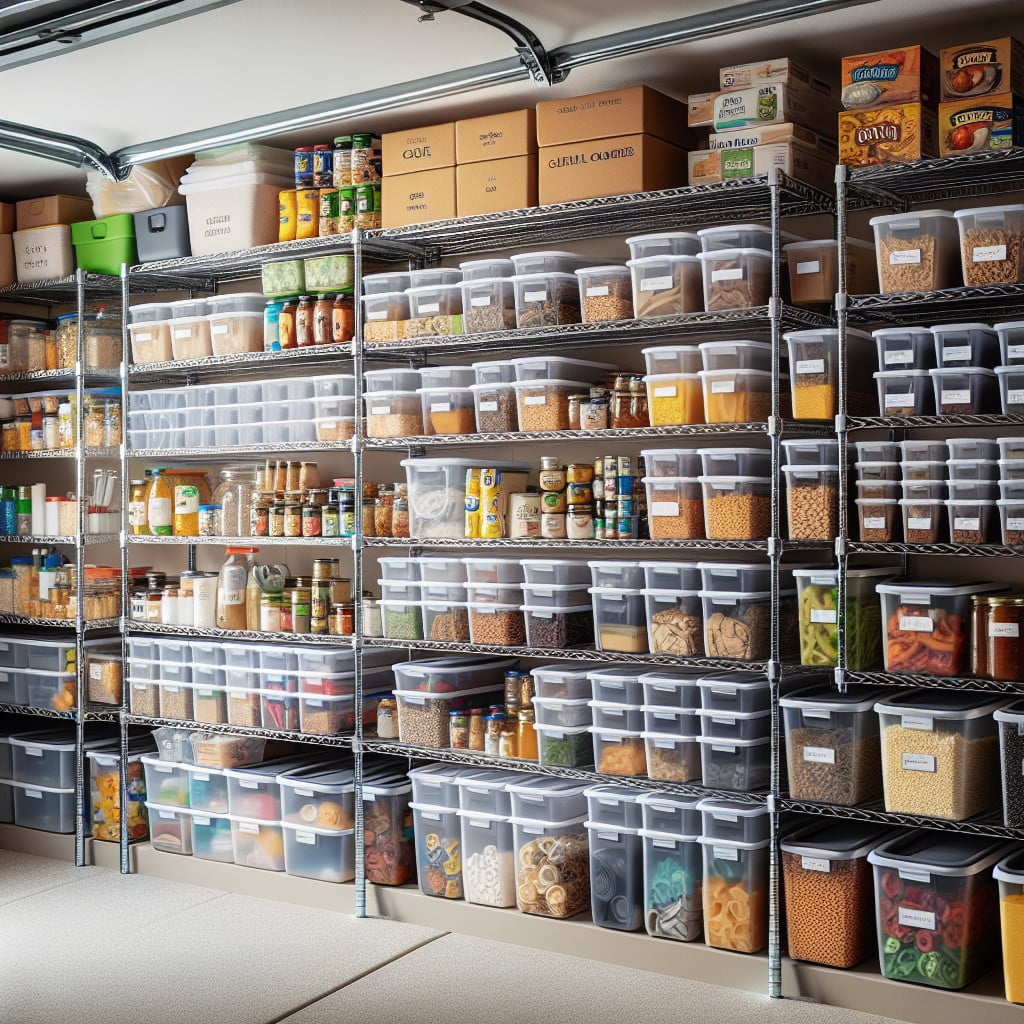
Implementing clear labeling on shelves and bins simplifies the process of finding the items you need with a quick glance. Opt for a consistent container shape to maximize space and to create a visually orderly system.
Alphabetical arrangement of non-perishable goods or categorizing by type—such as baking supplies, canned foods, and snacks—enhances efficiency.
Consider installing a magnetic board or a chalkboard inside the pantry door to keep an inventory list, which can be especially handy before grocery trips.
Adequate lighting is crucial; ensure that each shelf is well-lit so items in deep corners are easily visible.
Garage Food Pantry Shelving Ideas
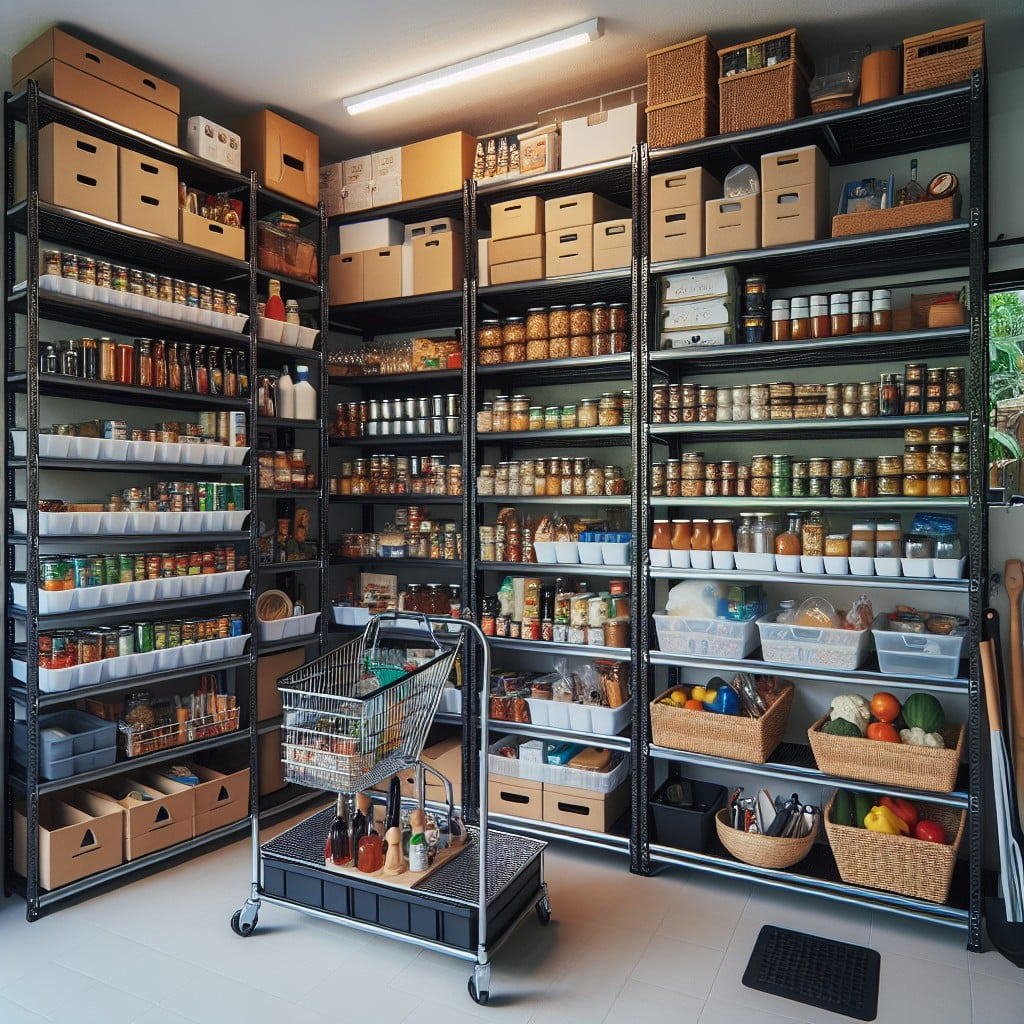
Selecting the right shelving for your garage pantry directly impacts how efficiently you can store and access food items. Opt for sturdy, heavy-duty shelving units that can support the weight of bulkier items. Adjustable shelves offer the flexibility to accommodate various container sizes, allowing for optimal space utilization. Wire racks aid in ventilation, keeping food dry, while clear storage bins help in monitoring inventory at a glance. For a streamlined look and additional protection against dust, consider closed cabinets with lockable doors, which also help to deter pests. To enhance visibility, install shelf liners in a bright color; this will make items stand out, ensuring nothing gets lost in the back of the pantry. Remember, the goal is to create a system that simplifies food management and elevates the functionality of your garage space.
Take Inventory of Your Food
Keeping track of your food supplies is crucial for an efficient garage pantry. Implement a system to monitor expiration dates, which ensures you rotate items and use them before they go bad.
Use clear, labeled bins or a spreadsheet to log everything you store. Categorize goods by type — such as canned goods, grains, or spices — to streamline the process of finding what you need.
If you’re tech-savvy, consider a pantry management app. Regularly updating your inventory helps avoid overbuying and keeps your stocks fresh and usable.
Install Custom Pantries
Custom-built pantries can fit your garage’s specific dimensions and storage needs. When assessing your available space, consider the height of the ceilings and the depth of the shelves. Opt for adjustable shelving to accommodate items of various sizes and ensure all your goods are easily accessible. Choose durable materials like metal or hardwood to withstand the garage environment, and seal wooden shelves to prevent warping from moisture.
Additionally, integrating drawers and labeled bins can streamline organization, while a freestanding unit may be beneficial for renters or those who frequently reconfigure their space. For aesthetics and protection, add doors to shield your pantry items from dust and sunlight.
Ventilate and Regulate Temperature
Maintaining proper ventilation in your garage pantry is crucial to prevent moisture buildup that can lead to mold and spoilage. Consider installing a ventilation fan or periodically opening the garage door for fresh air circulation.
Temperature regulation is equally vital; most pantry items require a cool, dry environment. If the garage is not climate-controlled, insulation might be necessary.
During warmer months, a dehumidifier can help keep humidity levels in check. For year-round temperature stability, a small air conditioning unit or heater could be beneficial, depending on your geographic location and seasonal changes. Using a thermostat to monitor the garage’s temperature ensures the space remains within a safe range for stored food items.
Keep Away Bugs and Rodents
To ensure your garage pantry remains free from pests:
- Store goods in airtight containers: Glass jars, heavy-duty plastic containers with seals, and metal tins prevent odors from attracting pests and protect your food from infestations.
- Regularly inspect for signs of pests: Look for droppings, nibble marks, or unusual smells that could indicate a problem, acting swiftly if you spot any evidence.
- Use natural deterrents: Bay leaves, peppermint oil, or diatomaceous earth can repel insects without the use of harsh chemicals.
- Maintain cleanliness: Clean spills immediately and sweep up crumbs to avoid enticing bugs and rodents.
- Seal gaps and cracks: Inspect the garage for entry points and seal them with caulk or steel wool, as even small openings can be gateways for pests.
- Consider a pest control service: If the problem persists, professional services can offer targeted solutions to keep your pantry pest-free.
Reorganize Your Pantry Periodically
To maintain an efficient garage pantry system, periodic reorganization is key. Here are a few steps to help keep your pantry functional and orderly:
- Check expiration dates regularly and move items that are nearing their end closer to the front to ensure they are used first.
- Take into account seasonal changes and adjust your stock accordingly. For instance, bulk up on hot cocoa and soup mixes in winter, or canning supplies during harvest season.
- Every few months, do a thorough inventory to remind yourself of what you have and to help plan meals around items that need to be consumed.
- Adjust shelf heights as necessary to accommodate larger or oddly-shaped items, maximizing vertical storage space without stacking items too high.
- Consider the flow of how you cook and use ingredients — place frequently used items within easy reach and less used items further back or higher up.
- After a grocery trip, resist the urge to simply place new items in front of the old; rotate stock by placing new purchases behind older ones.
Regular reorganization not only prevents waste but also brings a sense of order and calm to your storage space, making meal prep more enjoyable and efficient.
DIY Garage Food Storage Ideas
Crafting effective food storage solutions in your garage doesn’t have to be costly or complicated. Consider repurposing old bookshelves or cabinets as a starting point. By adjusting the shelf heights, you can accommodate a variety of item sizes, from canned goods to bulk purchases.
Another practical idea is to use stackable bins or baskets. These can be labeled for easy identification and arranged to make the most of vertical space. For those who enjoy a bit of crafting, building simple wooden crates that can be stacked or mounted against the wall is both a functional and rustic option.
Pegboards offer versatility and can be fitted with hooks or baskets to hold lighter items or utensils. Wall-mounted mason jars are perfect for storing spices and baking ingredients, keeping them at eye level and within easy reach.
Finally, consider a rolling cart or island. It adds mobility to your storage, allowing you to move heavier items with ease, and the shelves beneath can be used for additional storage. Remember to measure your space carefully and plan your DIY project to ensure everything fits comfortably and functionally in your garage.
Garage Food Storage Organisation
Organizing your garage food storage is key to preventing waste and ensuring ease of access. Use clear, airtight containers to protect food from moisture and pests.
Group items by category—like canned goods, baking supplies, and beverages—for easy location. Implement the first-in, first-out (FIFO) method by placing new purchases behind older ones to keep track of expiration dates. Use labels facing outwards for quick identification.
If space allows, dedicate zones for different types of food, such as a shelf for everyday items and another for bulk or less frequently used products. Lastly, incorporate stackable bins or drawers for small items to maximize vertical space and maintain order.
Cabinets for Storing Food in the Garage
Selecting the right cabinets plays a pivotal role in keeping your garage pantry organized and your food protected. Consider materials that withstand fluctuating temperatures, such as metal or heavy-duty plastic. These are ideal choices because they do not warp or degrade easily.
Ensure that the cabinets have secure, tight-fitting doors. This feature keeps out dust, moisture, and pests, which is essential for maintaining food quality. If possible, opt for models with locking mechanisms for added security against children and animals who might wander into the garage.
When positioning the cabinets, place them off the floor to prevent any potential water damage from spills or flooding. If you’re working with limited space, maximize vertical storage with tall cabinets or install overhead ones.
To enhance visibility and access, interior cabinet lighting or transparent door panels can be useful. It allows you to see the contents at a glance without rummaging through items.
Lastly, incorporate a labeling system that clearly designates areas for different food categories within the cabinets. This not only aids in finding items quickly but also helps in tracking expiration dates to reduce waste.
What Pantry Items Can Be Stored in Garage?
When considering what to store in your garage pantry, focus on non-perishable items that are less sensitive to temperature variations. Canned goods such as vegetables, fruits, and soups are ideal, as they are sealed and have long shelf lives. Dry goods like rice, pasta, and beans also fare well, especially when kept in airtight containers to protect against moisture and pests.
Bottled beverages, from water to soft drinks, can be stored here too, as they are less likely to be affected by the garage’s fluctuating temperatures compared to perishables.
On the other hand, avoid storing oils, chocolates, or any items prone to melting or spoilage in warm conditions. Similarly, flours and sugars can attract pests and should be stored in sealed, pest-proof containers if kept in the garage.
Lastly, if you have pet food, consider keeping it in the garage but ensure it is in a tightly sealed container to maintain freshness and prevent attracting animals. Always consider the climate of your region and the insulation quality of your garage when choosing which pantry items to store there.
How Much Space Do You Need to Build a Pantry?
Determining the amount of space necessary for a garage pantry hinges on several factors. Firstly, consider the volume of items you plan to store, as this dictates the required shelving and floor area. A standard pantry typically measures around 5 feet wide and 2 feet deep, providing a balance between accessibility and storage capacity.
For smaller households or limited garage space, even a compact unit of about 3 feet wide could suffice, especially if utilizing vertical space efficiently. Conversely, larger families or bulk shoppers might require an expanse closer to 8 feet or more, ensuring enough room for bulk items and various food categories.
When planning, remember to allocate enough clearance for doors to swing open or for drawers to pull out fully. Also, include walking space for comfortable access to items without the need to move other objects out of the way. Lastly, the layout of your garage and the positioning of other utilities may influence the pantry size and location, so consider these elements during planning to optimize the available area.
FAQ
Is it safe to have a pantry in the garage?
Considering the required conditions for pantry goods, it’s generally not advised to have a pantry in the garage due to most garages not providing a consistently cool and dry environment.
What pantry items can be stored in the garage?
Canned goods, beans, rice, and other grains can be effectively stored in the garage, provided it has adequate storage space and is maintained under proper temperature conditions.
What if I have no space for pantry in my kitchen?
No space for a pantry in your kitchen can be effectively utilized by installing wall-mounted racks for utensils, pots, and pans, over-the-door organizers for wraps and foils, as well as under-cabinet hooks or racks for mugs, kitchen tools, and dish towels.
What are the ideal conditions for maintaining a garage pantry?
The ideal conditions for maintaining a garage pantry involve regulating temperature between 50-70 degrees Fahrenheit (10-21 Celsius), ensuring low humidity, providing ample shelving, and safeguarding against insects and rodents.
How can I ensure pests and rodents don’t access my garage pantry?
To prevent pests and rodents from accessing your garage pantry, ensure it’s properly sealed, regularly clean the area, store food in airtight containers and use traps or natural deterrents as necessary.
How can I optimize space when setting up a pantry in the garage?
Optimize space when setting up a pantry in the garage by utilizing vertical storage solutions, installing pull-out drawers and shelves, categorizing items by use, using transparent containers for visibility, and ensuring a proper arrangement that takes temperature control and pest prevention into consideration.
Recap:
